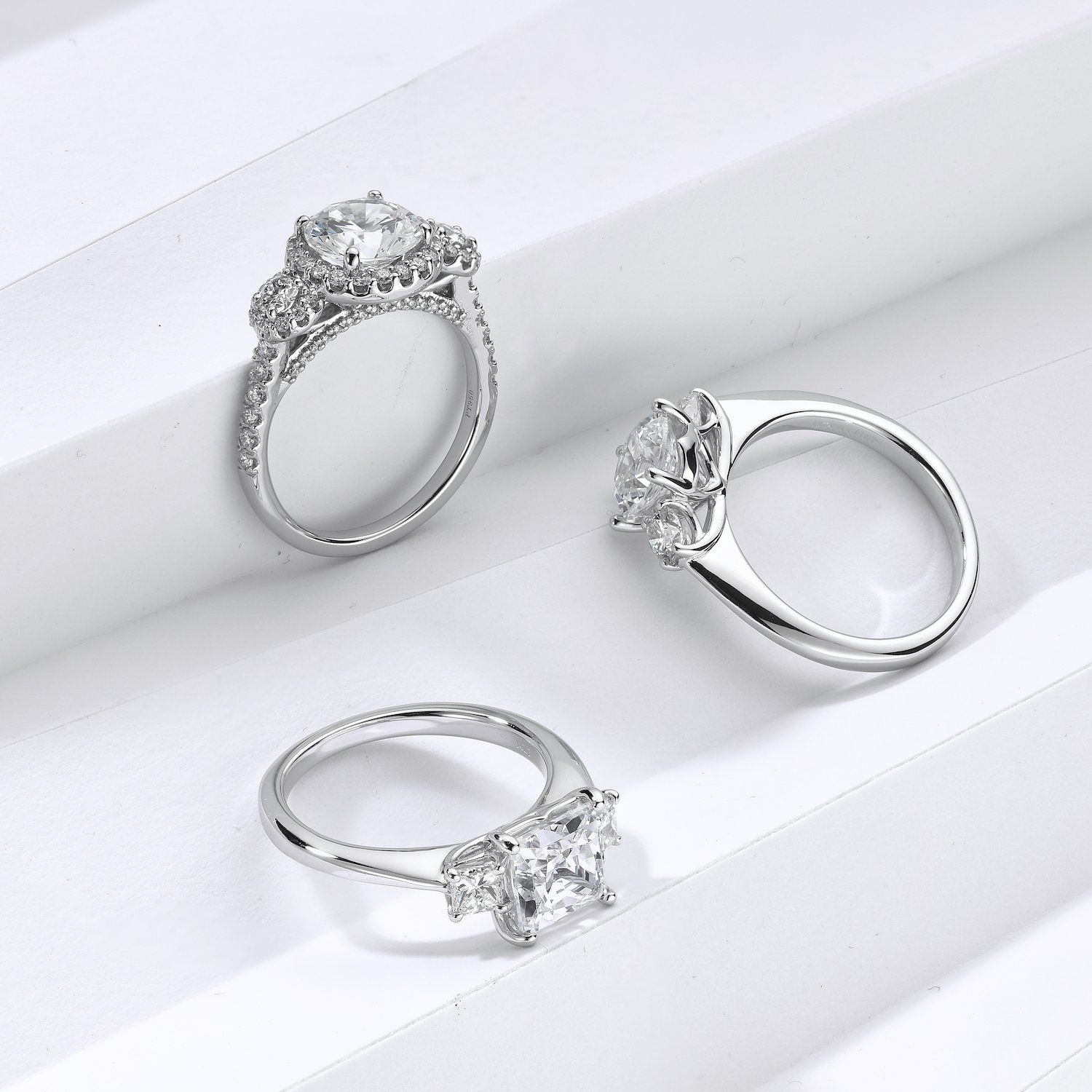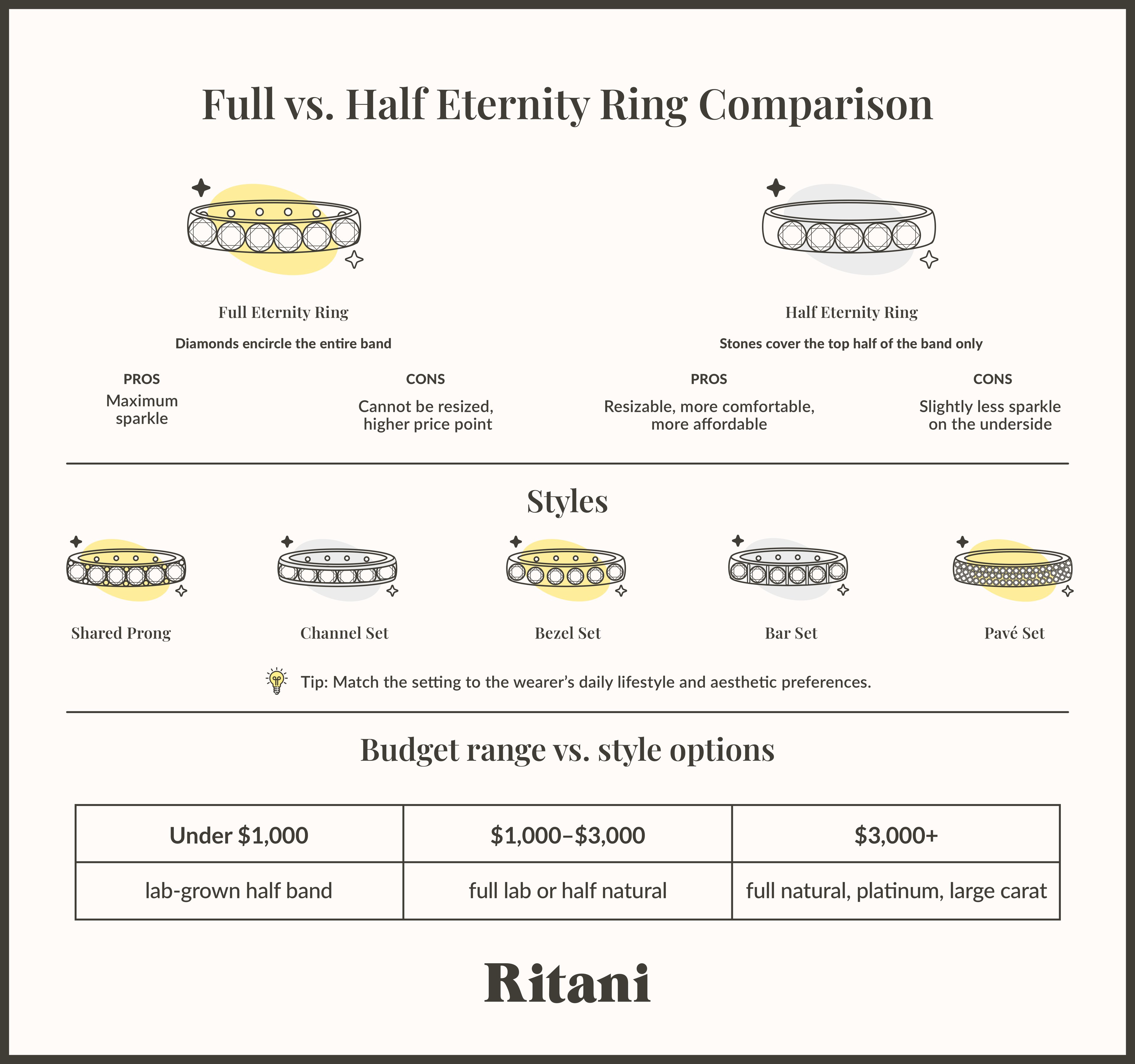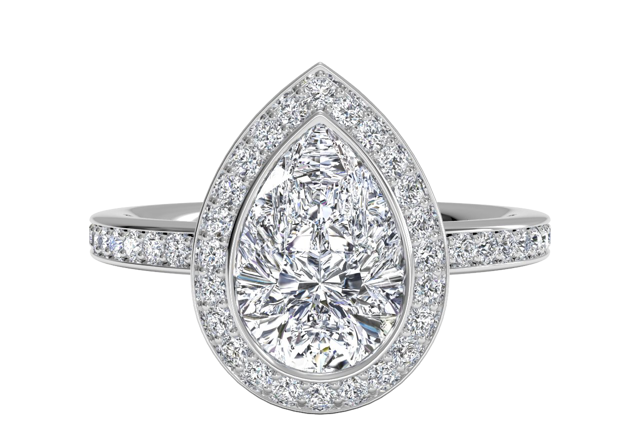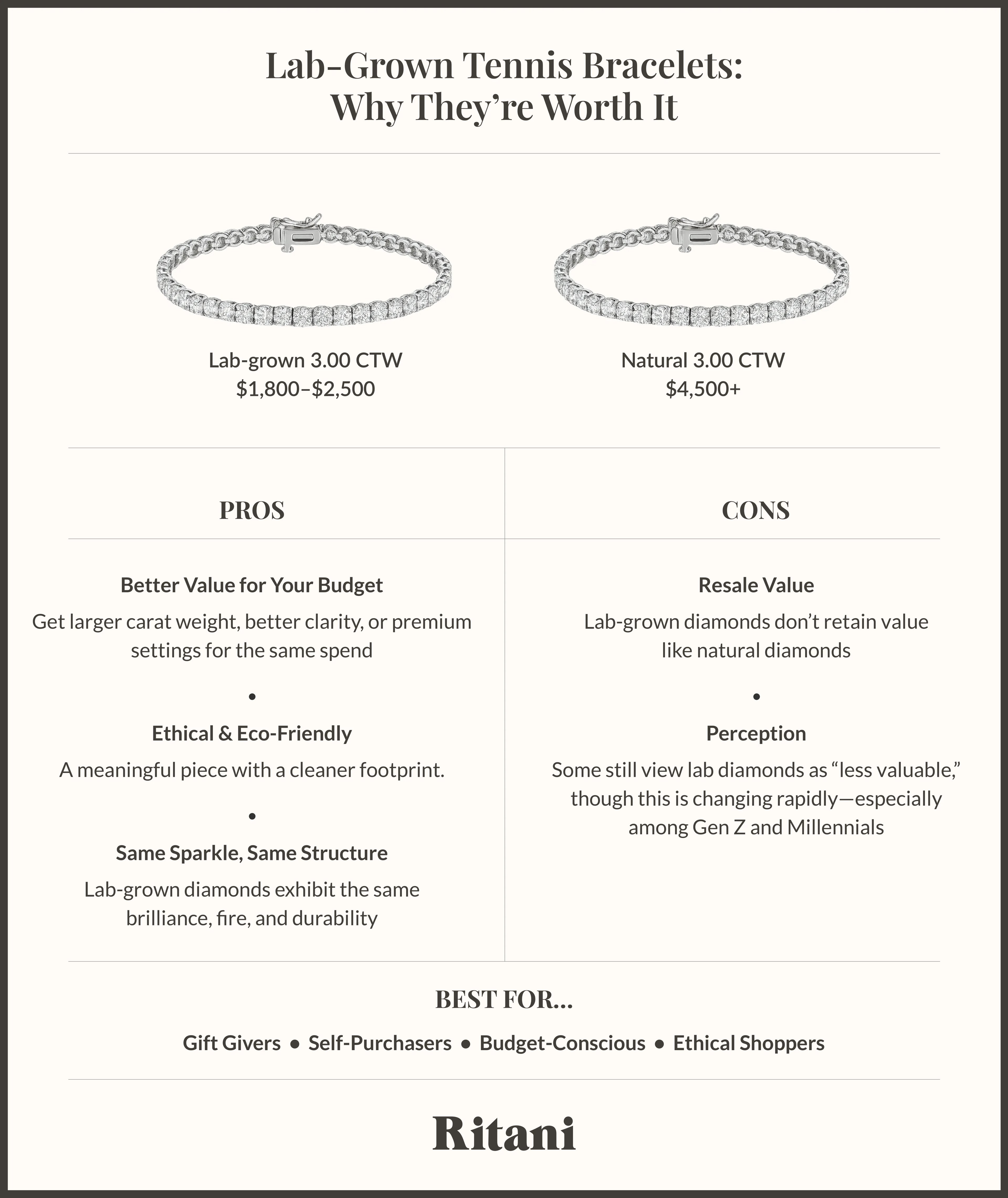Decoding Ring Lingo: Essential Terms You Need to Know When Shopping for an Engagement Ring

When thinking about engagement rings, some envision the exact type of ring they desire—whether it's an emerald-cut diamond solitaire on a platinum band, an oval-cut diamond with a pavé band, a consummately romantic toi et moi ring, or something entirely else. But for those unfamiliar with engagement rings, we know how downright intimidating shopping for an engagement ring can be! From baskets to halos to prongs, etc., what initially seemed like shopping for a simple bauble can get rather complex. That’s why Ritani has compiled a functional engagement ring glossary for you to use to familiarize yourself with all the essential terminology that you’ll need to know to help you find that dream ring.
The 'Four C’s'
The term "Four Cs" represents a diamond's color, cut, clarity, and carat weight. These components all play a pivotal role in determining a diamond's overall quality, value, and beauty.
Diamond Cut
The most significant choice you’ll need to make during your engagement ring search revolves around the diamond cut you want. The cut refers to the shape of the central diamond within the ring. Diamond cuts are the precise angles a skilled artisan carves into a rough diamond, transforming it into a polished gem. These intricate cuts are based on scientific equations and proportions strategically devised to enhance the reflection and refraction of light within the gemstone. Among the "Four Cs," the cut holds the utmost importance for a diamond's value and significantly impacts its appearance.
Inclusion
Inclusion refers to an internal flaw within a diamond, which could be in the form of a foreign object, a crack, or any irregularity situated within the gem's interior. While they might only become noticeable under 10x magnification, nearly every diamond possesses an inclusion. These potential inclusions display characteristics like bubbles, clouds, carbon spots, or abrasions. An imperfection situated on the surface is called a blemish.
The Difference Between Karat and Carat
Although they’re pronounced the same, they are different entities, making it crucial to know what each one means. 'Carat' refers to the weight measurement of gemstones and diamonds. Despite its frequent confusion with visual size, carat weight is essentially a measure of mass. Notably, carat weight isn't perceptible to the naked eye. The weight of a stone is influenced by various factors, including its density, the composition of the gem, and its shape. 'Karat' is the unit used for measuring gold composition. The measurement of gold karats is somewhat more intricate than assessing diamond carats. Karats indicate the proportion of gold within 24 parts. 24K gold signifies pure gold.
Alloy
An alloy is a blend of various metals into a single hybrid substance. The mix of different metals yields an alloy with distinct characteristics. With metal alloys, hardness, durability, and color can be precisely adjusted. Since precious metals alone are not inherently resilient in the long run, most jewelry items aren't composed of a single pure metal. Instead, they are typically crafted from an alloy, blending multiple metals. Nonetheless, there are exceptions to this practice. Gold, for instance, is frequently alloyed with other metals due to its inherent softness, although 100% gold (24k) pieces exist. However, opting for a wedding band or engagement ring made of pure gold isn't advisable, as it can wear down quickly. Furthermore, gold is often mixed with other metals to attain diverse hues. For example, rose gold generally results from a blend of gold and copper, while white gold is typically a fusion of approximately 75% gold combined with about 25% nickel and zinc. Ritani offers a hypoallergenic nickel-free white gold option for those with sensitive skin.
Setting
An engagement ring setting refers to how gemstones are positioned or secured within a precious metal band. The purpose of the ring setting is to accentuate the beauty of the diamond. The style of the ring, on the other hand, encompasses the complete design aesthetic that the ring setting contributes to, whether it takes the form of a solitaire, halo, three-stone design, or something else.
Solitaire
Tiffany & Co. is known for popularizing this design, introducing their signature solitaire engagement ring design in 1886. Solitaire engagement ring settings are a timeless and popular choice. Solitaire settings feature a fully metal band and a single central stone, directing the focus to the center gem.
Prong Setting
Prong settings utilize small metal protrusions called prongs to elevate the gemstone above the band while firmly securing it in place. This elevation accentuates the stone's visibility and facilitates the entry of light. These petite but firm graspers come in many shapes and angles, serving both an aesthetic and practical function—ensuring your stone remains securely cradled while permitting ample light to illuminate its brilliance. Due to their strategic positioning, prongs also play a pivotal role in highlighting the diamond's cut and elevating its overall sparkle.
Bezel Setting
Bezel settings surround the gemstone with a secure border, presenting a contemporary and polished aesthetic while maximizing durability, making it ideal for those who lead an active lifestyle. In addition, bezel settings offer optimal protection against potential snagging.
Basket Setting
The basket setting, characterized by its intricate metalwork, is designed to cradle the center stone. This configuration ensures optimal radiance. Additionally, horizontal bands interconnecting the prongs create a secure base for the gemstone, enhancing its protection. The meticulous artistry of the basket setting gives it a timeless allure, exhibiting the splendor of your precious gem.
Halo
Angels aside, halo engagement ring settings involve smaller stones encircling the central gem, creating a luminous display. This motif not only imparts an ethereal touch but also amplifies the size of the main stone, delivering a stunning impact. Moreover, halos provide an added layer of security for the central gem, acting as a protective buffer. There are numerous halo designs, from the classic single halo to the double halo (where the center stone is embraced by two tiers of smaller stones). There is even a 'hidden' halo design positioned beneath the central stone to enhance brilliance.
Pavé
Originating from the French term for paved, pavé engagement ring settings present a band embellished with a multitude of miniature diamonds meticulously set closely together, resulting in a shimmering diamond-studded appearance. This setting ideally suits those seeking a delicate yet intensified glimmer. Prized for its dazzling allure akin to a twinkling pathway, this meticulous design gives a sense of glamour while creating the illusion of a larger, more radiant center stone. The intricate nature of pavé settings demands skilled artistry, which subsequently elevates the cost. However, the dazzling way your ring captures attention from every angle makes the investment truly worthwhile.
Shank
A ring shank essentially refers to the ring's band itself. The shank defines the ring's character and determines the arrangement of stones. They are frequently classified based on their visual characteristics and come in many variations.
Now that you’re well-versed in engagement ring jargon, contact us today to chat with our customer concierge team—use your newly acquired ring vocabulary to tell them exactly what you want!


